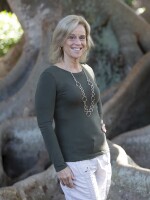For 20 years, Sarasota based artist John Sims has created works that examine confederate symbols and African-American culture. Now Sims is teaming up with The University of South Florida Department of Anthropology to host a series of talks with artists, academics, activists, and politicians, among others, to address public memory and heritage and to advocate for restorative justice and racial equity.
Diane Wallman, a faculty member at USF, said the idea for the project came after reading an op-ed John Sims wrote in the Tampa Bay Times about efforts to de-memorialize a plantation in Ellenton as a Confederate memorial.
Monuments, Markers and Memory, is part of the USF Contemporary Art Museum's exhibition Marking Monuments, which addresses creative strategies to challenge and transform the dominant histories and symbols surrounding public memorials.
WUSF's Cathy Carter speaks with John Sims about the upcoming panel series which kicks off Saturday, Jan 23.

John, you say historical markers can be seen as a reflection of a community's values.
Yes, I think they say a lot about the moral compass, the ideas of justice, and what history needs to be marked. And very often how you have control over a community is by how you suppress certain stories and elevate other ones.
So in these series of conversations, you say we have to be unafraid to talk about racism and how to tell a bigger picture within these public spaces.
Well, yes, the question is, who owns Southern heritage? Or who owns American heritage, and who should be recognized in ways that tell a full story? And if you recognize the kind of racist leadership that frames what's important and what's not important, then you can see where the work needs to be done. So with these kind of markers, I think this is a good place to start some of these conversations because they're physical, their language is clear, and it speaks to a time that was real and that needs to be redressed.
So in your work, you have reimagined Confederate symbols and kind of turn them on their head. How will you talk about reimagining some of the monuments and memorials here in Florida?
Well, I think with the reimagining, which is connected to an exhibition at USF called Marking Monuments, we'll be discussing the creative strategies and challenges about how we transform the dominant histories going forward, and the reimagined representations for a more balanced and equitable public engagement to help guide a political, social and cultural follow-through.

As we have the conversation about reimagining some of these public spaces, you were drawn to the Judah P. Benjamin Confederate Memorial at Gamble Plantation Historic State Park in Ellenton. Can you tell us about what you saw on a recent visit there?
So here we have this majestic white house-looking building. And what I saw was very minimal language regarding the life of the slaves that occupied that space. And it was my feeling that there needs to be a stronger representation of those stories, not only at Gamble, but also slave plantations throughout the country. How do we challenge the political and legislative support systems for these kind of spaces? One of the big problems I have with the Gamble Plantation, in particular, is the fact that it's a Confederate memorial, but also the fact that it's a state park. So public money goes to support this Confederate memorial. And so I introduced a petition to rename this plantation, this park, and to create a conversation around how do we re-contextualize this space to tell the story of the slaves who were in that space.
And again, this four-part series is going to wrap up with the theme of redress. I know you've already started thinking about some of your remarks. Can you tell us what redress means to you?
Well, I want to address the American slave plantation as a site of pain, trauma, and a grand symbol of white supremacy and institutional racism. You know, I want to be able to create a national challenge to recover and possibly reposition the plantation not as a marker, a memorial, or some sort of monument, but to a particular history and its victims. How do we create a path for transformation and national healing?




